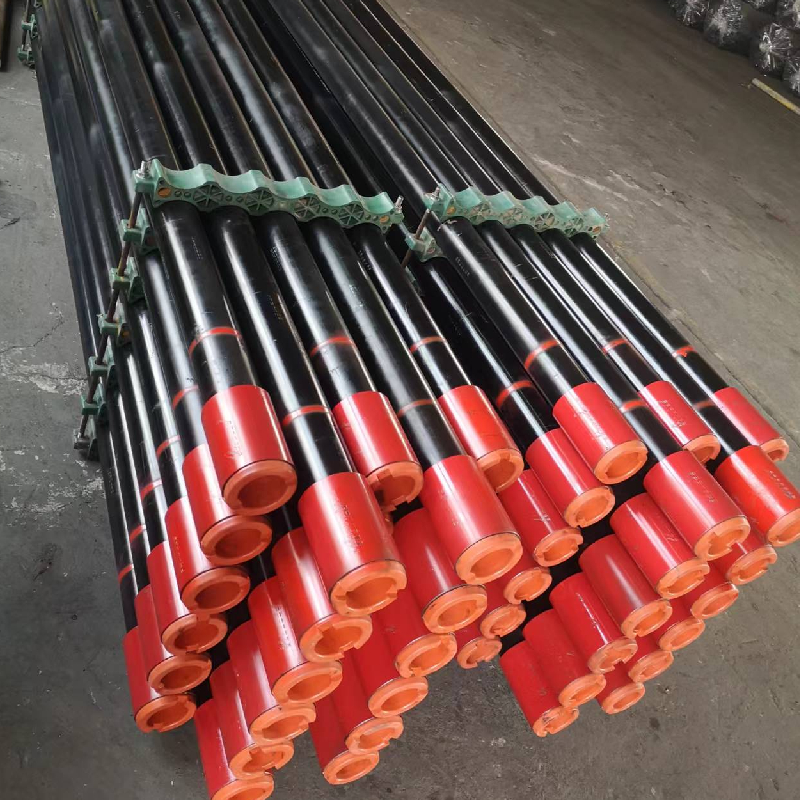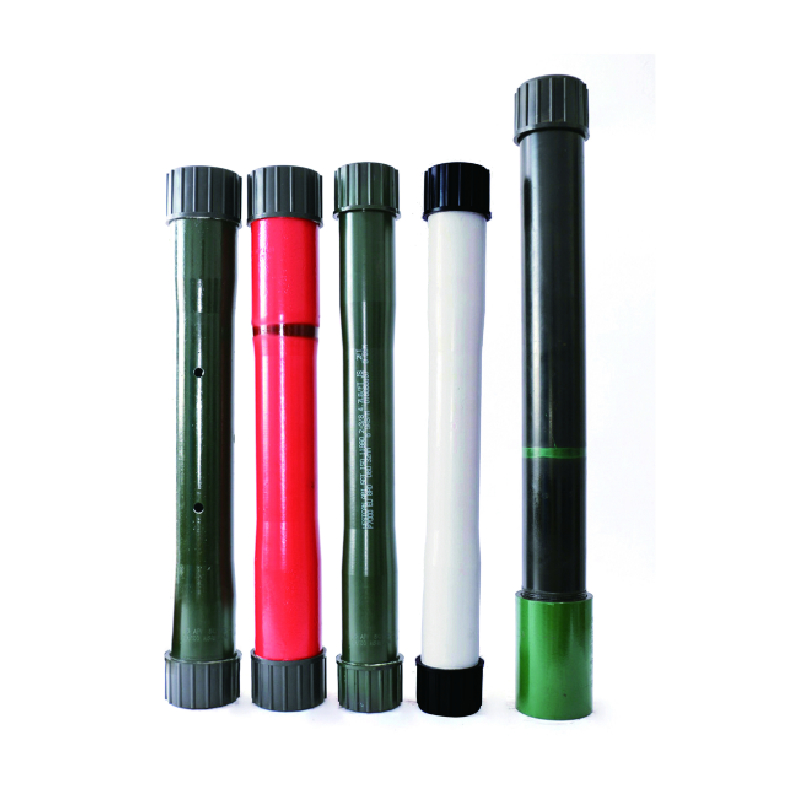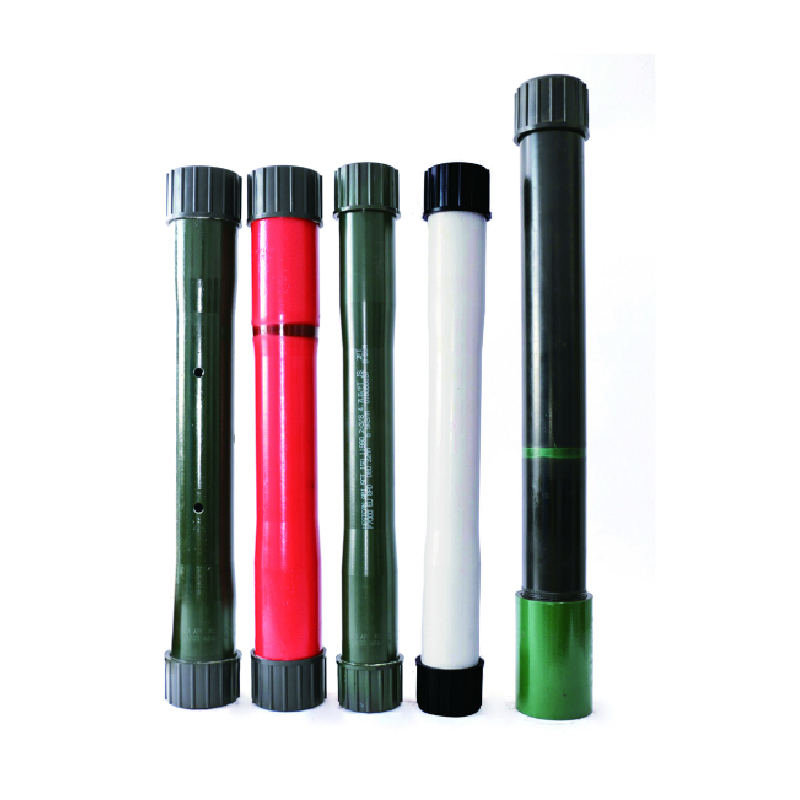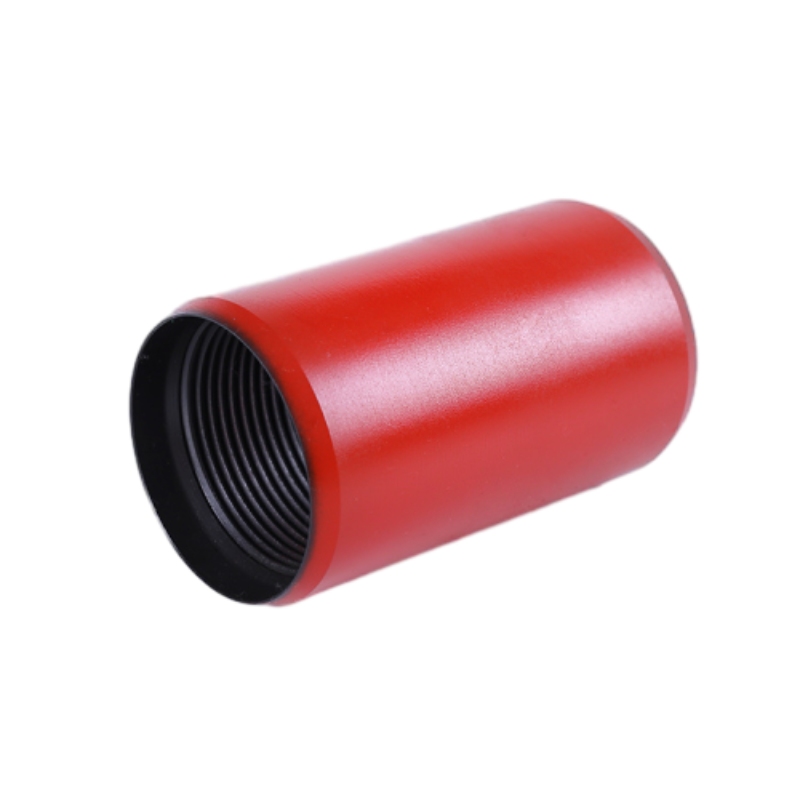Pup Joint Manufacturers | API 5CT Oil & Gas Tubing Joints
The Crucial Role of Pup Joint Manufacturers in Oil & Gas
In the demanding environments of the oil and gas industry, precision-engineered components are paramount to operational success and safety. Among these, pup joints play a critical role, serving as essential short sections of pipe used to adjust the length of tubing or casing strings to precise measurements. They are indispensable for spacing out downhole assemblies, allowing for accurate positioning of components within the wellbore, and ensuring proper engagement with wellhead equipment. The reliability and performance of these components are directly attributable to the expertise and manufacturing prowess of leading pup joint manufacturers.
The global energy landscape continues to evolve, driven by increasing energy demand and technological advancements in drilling and extraction. This dynamic environment places significant pressure on the supply chain to deliver components that not only meet stringent technical specifications but also offer enhanced durability and cost-efficiency. Key industry trends influencing the sector include the push towards deeper and more complex wells, the necessity for materials capable of withstanding corrosive and high-temperature conditions, and the increasing adoption of automated manufacturing processes to ensure consistent quality and scalability. For pup joint oil and gas applications, this means a continuous drive for innovation in material science, threading technology, and quality control, ensuring that every tubing pup joint can perform reliably under extreme stress. These trends underscore the growing importance of partnering with experienced and technologically advanced manufacturers capable of meeting these evolving demands.
The Manufacturing Process: Precision, Quality, and Adherence to Standards
The production of high-quality pup joints involves a meticulous multi-stage process, demanding stringent quality control at every step. Reputable pup joint manufacturers follow a detailed flow to ensure the final product meets or exceeds international standards such as API 5CT and ISO 9001. This commitment to precision guarantees the integrity and longevity of pup joints in critical applications within industries like petrochemical, metallurgy, and water supply & drainage.
Detailed Process Flow:
-
Material Selection and Sourcing:
The foundation of a durable pup joint is the quality of its raw material. Common materials include high-strength alloy steels (e.g., J55, N80, L80, P110, Q125) for downhole applications, selected for their specific mechanical properties, resistance to corrosion, and suitability for varying pressure and temperature regimes. Materials are sourced from certified suppliers and undergo rigorous chemical composition analysis upon receipt.
-
Cutting and Forging/Upsetting:
Raw seamless steel pipe sections are cut to the desired pup joint lengths. For specialized applications requiring enhanced strength at the threaded connections, an upsetting process is employed. This involves heating the pipe ends and then forging them to increase wall thickness, thereby preventing thread deformation and enhancing connection integrity under stress. This can be either external upset (EUE) or non-upset (NUE).
-
Heat Treatment:
To achieve specific mechanical properties such as tensile strength, yield strength, and hardness, pup joints undergo precise heat treatment processes. This often includes quenching and tempering (Q&T), which involves heating the steel to a high temperature, rapidly cooling it, and then reheating it to a lower temperature. This process refines the grain structure and relieves internal stresses, significantly improving the material's toughness and resistance to brittle fracture.
-
CNC Machining and Threading:
The ends of the pup joints are precisely machined using Computer Numerical Control (CNC) lathes. This stage is critical for cutting the exact thread profiles (e.g., EUE, NUE, BTC, LTC, premium connections) that ensure perfect compatibility and seal integrity with other downhole tubulars. Precision machining guarantees consistent pitch, taper, and depth, which are vital for preventing leaks and ensuring robust connections.
-
Inspection and Non-Destructive Testing (NDT):
Each pup joint undergoes a series of rigorous inspections. This includes visual inspection for surface defects, dimensional checks (length, diameter, wall thickness, thread dimensions), and NDT methods such as Magnetic Particle Inspection (MPI) or Ultrasonic Testing (UT) to detect internal flaws, cracks, or imperfections that might compromise structural integrity. Hydrostatic pressure testing is also performed to verify leak resistance under simulated downhole conditions.
-
Surface Treatment and Coating:
Depending on the application, pup joints may receive surface treatments like phosphating, painting, or specialized coatings to enhance corrosion resistance, especially in harsh downhole environments where exposure to H2S, CO2, and chlorides is common. These treatments significantly extend the service life of the pup joint.
-
Final Marking and Packaging:
Finished pup joints are marked with essential information including material grade, size, length, manufacturing date, and compliance with API specifications. They are then threaded with protectors and packaged securely to prevent damage during transit and storage.
The adherence to internationally recognized testing standards like ISO and ANSI is not merely a formality; it is a testament to the quality and safety commitment of diligent pup joint manufacturers. This meticulous approach ensures advantages such as exceptional corrosion resistance, superior energy saving through minimal pressure drops, and an extended service life even under extreme operational pressures and temperatures.

Figure 1: Illustration of pup joint manufacturing process stages, emphasizing precision machining.
Technical Specifications and Performance Parameters
Understanding the technical specifications of a tubing pup joint is crucial for engineers and procurement specialists to ensure compatibility and optimal performance in a given well design. These parameters dictate the joint's ability to withstand specific downhole conditions, including pressure, temperature, and corrosive elements. High-quality pup joint manufacturers provide detailed specifications to aid in precise selection.
Typical Tubing Pup Joint Specification Table:
| Parameter | Description | Typical Values / Standards |
|---|---|---|
| Outer Diameter (OD) | Nominal pipe size, critical for wellbore clearance. | 2 3/8", 2 7/8", 3 1/2", 4 1/2" (API 5CT) |
| Wall Thickness | Determines pressure rating and resistance to collapse. | API standard or customized per application. |
| Length | Short sections for precise spacing adjustment. | 2ft, 4ft, 6ft, 8ft, 10ft, 12ft (or customized) |
| Material Grade | Steel grade defines mechanical properties and corrosion resistance. | J55, N80, L80, P110, Q125 (API 5CT) |
| Thread Type | Connection type for compatibility with other tubulars. | EUE (External Upset End), NUE (Non-Upset End), BTC (Buttress Thread Casing), LTC (Long Thread Casing), Premium Connections |
| Yield Strength | Minimum stress required to cause plastic deformation. | 55,000 psi (J55) to 110,000 psi (P110) or higher. |
| Tensile Strength | Maximum stress material can withstand before breaking. | 75,000 psi (J55) to 125,000 psi (P110) or higher. |
| Hydrostatic Test Pressure | Proof test for structural integrity and leak resistance. | Up to 10,000 psi, depending on grade and wall thickness. |
These specifications are not merely numbers; they represent the engineering integrity and operational reliability designed into each pup joint. Choosing the correct material grade, thread type, and wall thickness is critical for managing downhole pressures, temperatures, and corrosive fluids, directly impacting the success and longevity of an oil and gas operation.
Application Scenarios and Technical Advantages
Tubing pup joints are versatile components essential across a spectrum of applications in the oil and gas industry and beyond. Their primary function is to provide precise length adjustments, but their technical design offers numerous advantages that contribute to overall system efficiency and safety.
Typical Application Scenarios:
- Well Completion & Workover Operations: Used to space out downhole tools, packers, and other completion equipment accurately within the wellbore, ensuring proper seating and functionality.
- Production Tubing String Assembly: Integrated into the production tubing string to achieve specific lengths, allowing for the precise placement of gas lift valves, safety valves, and other devices. They also facilitate connection to wellhead equipment.
- Coiled Tubing and Flowline Applications: While less common for direct integration, specialized pup joints can be used in surface flowline connections or test setups where exact length adjustments are necessary.
- Test & Measurement Setups: Critical for creating precise lengths in testing apparatus for various downhole tools and equipment, ensuring accurate calibration and performance validation.
Technical Advantages:
- Enhanced Durability: Manufactured from high-strength steels and often undergoing upset forging and rigorous heat treatment, pup joints exhibit superior mechanical strength, resisting tensile, compressive, and torsional stresses inherent in downhole operations.
- Superior Corrosion Resistance: For applications in corrosive environments (e.g., sour gas wells with H2S or CO2, or brine-laden fluids), pup joints can be manufactured from corrosion-resistant alloys (CRAs) or receive specialized internal and external coatings, significantly extending their service life and preventing premature failure.
- High-Pressure and High-Temperature (HP/HT) Capability: Designed and tested to withstand extreme downhole conditions, including pressures up to 15,000 psi or more and temperatures exceeding 350°F (177°C), without compromising structural integrity or seal performance.
- Precise Length Adjustment: Their primary advantage lies in providing exact length increments, crucial for accurately spacing out bottom hole assemblies (BHAs) and ensuring components like packers and safety valves are positioned correctly for optimal well performance.
- Optimized Flow Efficiency: With precisely machined connections and smooth internal bores, pup joints contribute to maintaining laminar flow, minimizing turbulence, and reducing pressure drops within the tubing string, which translates to energy saving in pumping operations and improved hydrocarbon recovery rates.
- API & ISO Compliance: Adherence to global industry standards ensures interchangeability, consistent quality, and reliability across different equipment and environments, fostering trust and operational safety.
The selection of the appropriate tubing pup joint, therefore, is not a trivial decision. It requires a detailed understanding of the well's specific characteristics and a reliance on the technical expertise of leading pup joint manufacturers to provide components that offer these critical advantages.

Figure 2: Tubing pup joints ready for deployment in an oilfield setting.
Vendor Comparison and Customized Solutions
Selecting the right pup joint manufacturers is a strategic decision that impacts operational efficiency, safety, and project costs. While many vendors offer standard API-compliant products, true value lies in the ability to provide consistent quality, robust technical support, and flexible customized solutions. Evaluating manufacturers requires looking beyond basic price points to consider their full capabilities and service offerings.
Key Criteria for Vendor Comparison:
- Certifications and Compliance: Verify adherence to API 5CT, ISO 9001, and other relevant industry standards.
- Manufacturing Capabilities: Assess their capacity for upset forging, advanced CNC machining, and heat treatment processes.
- Quality Control Protocols: Inquire about their NDT methods, hydrostatic testing, and material traceability.
- Material Sourcing & Expertise: Ability to provide pup joints in various material grades, including CRAs for specialized applications.
- Customization Options: Flexibility in offering non-standard lengths, special thread types, or unique coatings.
- Delivery and Logistics: Lead times, inventory management, and global shipping capabilities.
- Technical Support and After-Sales Service: Availability of engineering assistance and responsiveness to post-delivery issues.
Product Comparison: Standard vs. Corrosion-Resistant Pup Joints
| Feature | Standard Pup Joint (e.g., API J55/N80) | Corrosion-Resistant Pup Joint (e.g., L80 Type 1, 13Cr, Duplex) |
|---|---|---|
| Primary Material | Carbon Steel / Low Alloy Steel | Low Carbon Alloy Steel (L80 Type 1), Stainless Steel (13Cr), Duplex/Super Duplex Stainless Steel |
| Corrosion Resistance | Limited, suitable for sweet (non-corrosive) environments. | Excellent, designed for sour (H2S), CO2, and chloride-rich environments. |
| Mechanical Strength | Good, meets API requirements for specified grades. | Excellent, often with superior yield and tensile strengths to standard grades. |
| Cost | Lower initial capital cost. | Higher initial capital cost, offset by longer service life and reduced maintenance. |
| Typical Applications | Conventional oil and gas wells, benign fluid conditions. | Sour gas wells, deepwater, HP/HT wells, chemical injection lines. |
Customized Solutions: Tailored to Your Project Needs
Beyond standard offerings, the ability of pup joint manufacturers to provide customized solutions is a significant differentiator. Complex well designs or unique operational challenges often require non-standard lengths, specialized thread forms (e.g., proprietary premium connections for enhanced sealing), or specific metallurgy to handle extreme pressures, temperatures, or highly corrosive fluids. A manufacturer with strong engineering capabilities can collaborate with clients to design and produce pup joints that precisely fit bespoke requirements, ensuring optimal performance and mitigating risks. This collaborative approach leads to highly specialized tubing pup joint solutions that integrate seamlessly into complex drilling and production programs, ultimately enhancing operational safety and efficiency.
Real-World Application Case Studies
The practical application of well-engineered pup joints highlights their indispensable value in the oil and gas industry. These case studies illustrate how robust and precisely manufactured tubing pup joints contribute to successful and efficient operations.
Case Study 1: Deepwater HP/HT Gas Well Completion
Challenge: An operator in the Gulf of Mexico was developing a deepwater gas well with a bottom-hole temperature exceeding 350°F (177°C) and pressures over 12,000 psi, coupled with high concentrations of H2S and CO2. The completion design required precise spacing of multiple downhole safety valves and a complex packer system within a 4 1/2-inch tubing string. Standard pup joints would not withstand the corrosive and HP/HT conditions, risking premature failure and significant intervention costs.
Solution: Collaborating with a specialized pup joint manufacturers, the operator specified custom pup joints made from a 13Cr material grade, which offers superior corrosion resistance in sour service. These pup joints were manufactured with premium gas-tight connections (e.g., Metal-to-Metal Seal) to ensure integrity under extreme pressure. Each joint underwent additional non-destructive testing, including eddy current inspection for micro-cracks and full-length ultrasonic testing, alongside high-pressure hydrostatic testing far exceeding API minimums.
Result: The custom-designed and rigorously tested pup joints facilitated the flawless installation of the complex completion string. The premium connections maintained their integrity throughout the high-pressure production phase, and the 13Cr material successfully resisted corrosion, leading to extended well life and avoiding costly workovers. This demonstrated significant long-term savings and enhanced operational safety.
Case Study 2: Horizontal Well Production String Optimization
Challenge: A land-based operator was completing a series of horizontal wells in a shale play, where precise spacing of inflow control devices (ICDs) and production packers within the 2 7/8-inch production tubing was crucial for optimizing reservoir drainage. Slight deviations in length could lead to inefficient production zones and potential water breakthrough. They needed a reliable supply of tubing pup joint in exact lengths, delivered on a tight schedule.
Solution: The operator engaged a high-volume pup joint manufacturers known for their rapid production capabilities and consistent adherence to API dimensional tolerances. The manufacturer provided a batch of API N80 EUE pup joints in custom lengths of 3 ft, 5 ft, and 7 ft, precisely matching the operator's completion design requirements. A dedicated quality assurance team ensured that every pup joint was within +/- 1/8 inch of the specified length and had perfectly machined EUE threads for quick and reliable make-up.
Result: The availability of precisely dimensioned pup joints allowed the operator to quickly and accurately run their completion strings, minimizing rig time. The reliable connections ensured no leaks or issues during the initial production phase, leading to optimized flow from the reservoir and maximizing hydrocarbon recovery. This efficiency directly translated into reduced operational costs and faster time to production.
Meeting Standards: Quality Assurance and Support
Adherence to Google's (Expertise, Experience, Authoritativeness, Trustworthiness) standards is foundational for any reputable B2B supplier. For pup joint manufacturers, this means a steadfast commitment to demonstrating deep technical knowledge, a proven track record, industry recognition, and transparent customer-centric policies.
Authoritativeness and Certifications:
- API Monogram License: A critical certification, particularly API 5CT, signifying compliance with the American Petroleum Institute's stringent standards for casing and tubing. This is a globally recognized mark of quality for pup joint oil and gas components.
- ISO 9001:2015 Certification: Demonstrates a robust quality management system across all manufacturing processes, from design to delivery.
- Strategic Partnerships: Collaborations with major oil and gas companies, drilling contractors, and engineering firms globally, showcasing a track record of successful project execution.
- Years of Service: Decades of experience in the oilfield tubulars sector build an invaluable repository of practical knowledge and problem-solving capabilities.
- Independent Test Data: Providing verifiable third-party test reports (e.g., from laboratories accredited to ISO/IEC 17025) on material properties, hydrostatic pressure, and connection integrity.
Trustworthiness: FAQ, Lead Time, Warranty, and Support
Frequently Asked Questions (FAQ)
Q: What is the typical lead time for pup joint orders?
A: Lead times vary depending on the product's specifications, material grade, quantity, and current production schedule. Standard API-grade pup joints (e.g., J55, N80 EUE) typically have a lead time of 3-6 weeks. Custom or specialized grades (e.g., L80 Type 1, P110, CRAs) may require 8-12 weeks due to specific material sourcing and complex manufacturing processes. We recommend contacting our sales team for an accurate quote and delivery estimate for your specific requirements.
Q: Do you offer customized pup joint lengths or thread types?
A: Yes, we specialize in providing tailored solutions. We can manufacture tubing pup joint in non-standard lengths (e.g., 3ft, 5ft, 7ft) and accommodate various thread types, including proprietary premium connections, beyond the standard API EUE/NUE. Our engineering team can work closely with you to develop solutions that meet unique well design and operational challenges.
Q: What warranty do you provide on your pup joints?
A: We stand by the quality of our products. All pup joints are warranted against defects in material and workmanship for a period of 12 months from the date of shipment, provided they are stored, handled, and used in accordance with industry best practices and our recommendations. Specific warranty terms and conditions are detailed in our sales agreement.
Q: How do you ensure the quality of your tubing pup joint?
A: Our quality assurance process is comprehensive. It begins with sourcing certified raw materials and includes in-process inspections at every manufacturing stage (forging, heat treatment, CNC machining, threading). We perform extensive NDT (MPI, UT), dimensional checks, and hydrostatic pressure testing on 100% of our finished products. All processes are governed by our ISO 9001 certified quality management system and comply with API 5CT specifications.
Customer Support and After-Sales Service:
Our commitment extends beyond product delivery. We provide comprehensive customer support, including pre-sales technical consultation to help clients select the most appropriate pup joints for their specific applications. Our after-sales support includes assistance with installation guidelines, troubleshooting, and prompt resolution of any product-related inquiries. Our dedicated team of engineers and customer service representatives ensures a seamless experience from initial inquiry to long-term operational success.
Conclusion
The reliability and performance of pup joints are critical to the safety and efficiency of upstream oil and gas operations. As explored, the meticulous manufacturing processes, adherence to international standards, and continuous innovation by leading pup joint manufacturers are fundamental to producing components that withstand the most challenging downhole environments. From material selection and precision machining to rigorous testing and tailored solutions, every step is designed to ensure optimal performance, extended service life, and ultimately, enhanced operational profitability.
Choosing a manufacturer who demonstrates unwavering commitment to quality, backed by robust certifications, extensive experience, and comprehensive customer support, is not merely a purchasing decision—it is a strategic partnership essential for navigating the complexities of modern energy extraction. Through dedication to engineering excellence and customer-centric service, these manufacturers continue to be vital enablers of global energy production.
References
- American Petroleum Institute (API). (2020). API Specification 5CT: Specification for Casing and Tubing. 10th Edition. Washington, D.C.: API Publishing.
- International Organization for Standardization (ISO). (2015). ISO 9001:2015: Quality management systems—Requirements. Geneva, Switzerland: ISO.
- DNV GL. (2018). RP-0414: Corrosion management of pipelines and piping systems. Oslo, Norway: DNV GL.
- SPE. (2021). Journal of Petroleum Technology. Society of Petroleum Engineers.
-
Tubing Crossover - API Compatible, Custom Sizes, In StockNewsNov.10,2025
-
Tubing Coupling | High-Strength, Leak-Proof Steel CouplingsNewsNov.10,2025
-
Wholesale API Threading Casing Coupling | API 5CT, Fast ShipNewsNov.10,2025
-
Pup Joint Supplier | API Certified, Custom, Quick ShipNewsNov.10,2025
-
Pup Joint Manufacturers | Precision Machined, Fast DeliveryNewsNov.10,2025
-
Tubing Coupling | Precision Steel, Leak-Proof, Fast DeliveryNewsNov.03,2025







